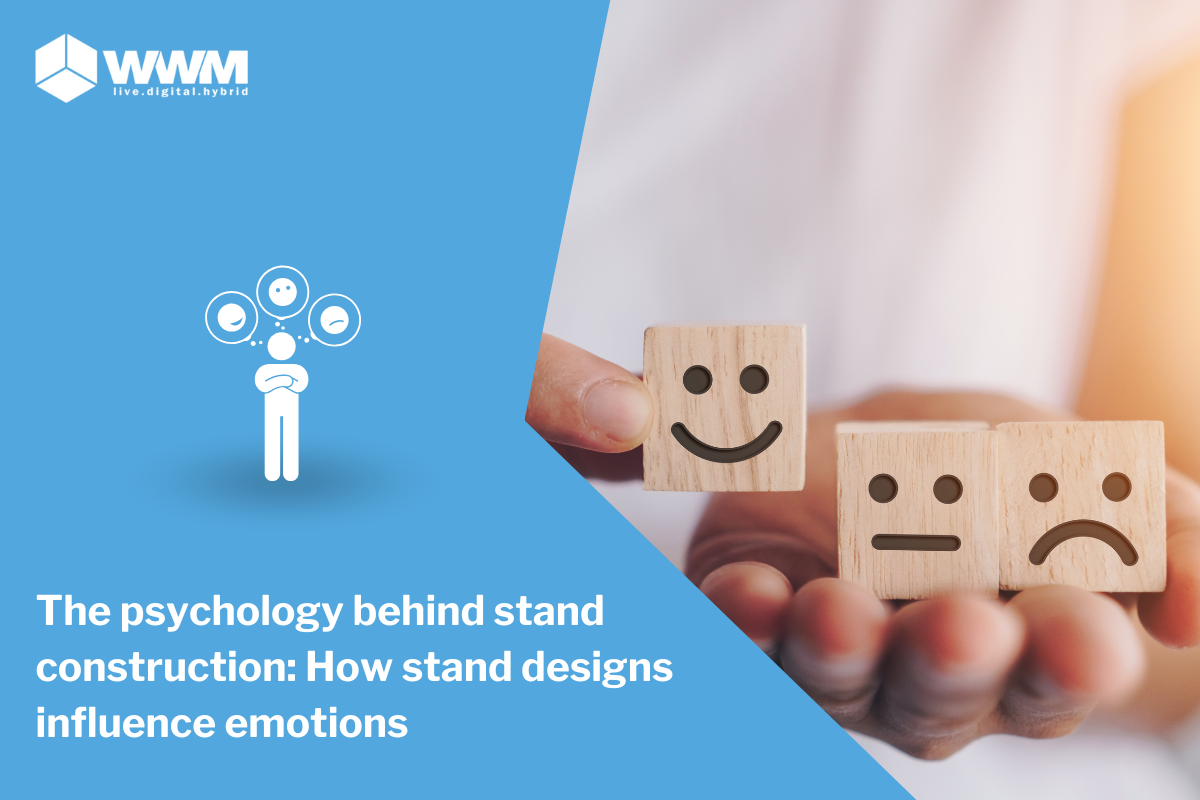Trade fair trends 2025: Emotional, digital and sustainable
In recent years, trade fairs have evolved from mere platforms for product presentations to important touchpoints for brand-building experiences....
2 min read
 Rebecca Zimmermann
:
Wednesday, 26. March 2025
Rebecca Zimmermann
:
Wednesday, 26. March 2025

The barrier-free design of trade fair stands is becoming increasingly important. Companies that exhibit at trade fairs should ensure that their presentation areas are accessible to all visitors - regardless of physical limitations. An inclusive exhibition stand not only signals social responsibility, but also expands the potential reach of the brand and enables an optimal visitor approach.
Accessibility means more than just avoiding obstacles. It encompasses all measures that enable people with physical, sensory or cognitive impairments to move around an exhibition stand, pick up information and take part in discussions without assistance.
Many companies are not aware of the challenges that people with disabilities face at trade fairs. These include, among other things:
Steps or difficult access routes that exclude wheelchair users or people with walking difficulties.
Lack of tactile or auditory aids for people with visual or hearing impairments.
Poorly legible information that makes communication difficult.
By creating an accessible design, companies demonstrate their openness to a diverse target group and thus increase their chances of establishing valuable business relationships.

A well thought-out design makes it possible to remove barriers and offer all visitors a pleasant stay. The key measures include:
Barrier-free paths and entrances
Wide, level entrances without steps
Non-slip flooring and sufficient manoeuvring space for wheelchairs
Accessible seating for conversations
Inclusive provision of information
Large, high-contrast fonts for better legibility
Provision of information material in Braille or as an audio version
Easy language for better comprehension of complex content
Technological support
Induction loops for people with hearing aids
Digital presentations with subtitles and sign language options
Virtual reality elements that enable interaction without physical barriers
Sensitisation of stand personnel
Training for respectful interaction with people with disabilities
Knowledge of barrier-free offers at the stand
Understanding the different needs of visitors
Basic accessibility at a trade fair is primarily the responsibility of the organiser. They must ensure that basic accessibility is provided - for example through barrier-free entrances, sanitary facilities and wayfinding systems. The organiser should also provide transparent information on accessibility in advance so that exhibitors and visitors can make the best possible preparations.

An accessible exhibition stand not only offers added social value, but also brings clear economic benefits:
Increased visitor numbers: better accessibility means more potential customers can be reached.
Positive brand perception: Companies demonstrate their commitment to inclusion and diversity.
Competitive advantage: At a time when many companies are just beginning to take accessibility seriously, an inclusive exhibition stand stands out positively.
Compliance with legal requirements: In many countries, there are already accessibility requirements, compliance with which provides legal certainty.
Barrier-free exhibition stands are an important step towards an inclusive business world. Companies that focus on barrier-free concepts at an early stage demonstrate innovative strength and foresight. The integration of appropriate measures is not only a question of social responsibility, but also a decisive factor for a successful and future-orientated brand presentation. Those who make their trade fair appearances accessible to all will benefit in the long term from an expanded network and new business opportunities.

In recent years, trade fairs have evolved from mere platforms for product presentations to important touchpoints for brand-building experiences....

A customized exhibition stand is the key to standing out at trade fairs and events. A well-planned stand makes it possible to present products and...

Trade fairs are vibrant melting pots of commerce and innovation, where companies and customers meet in a dynamic environment. But what is often...